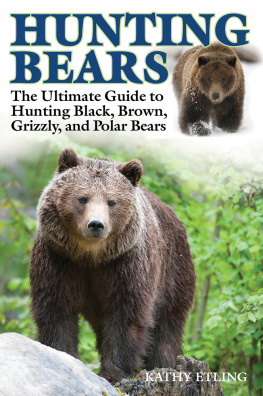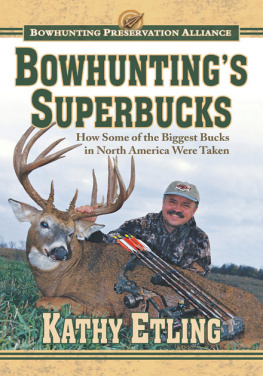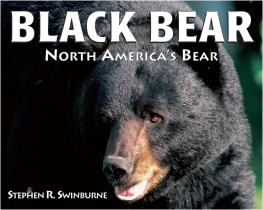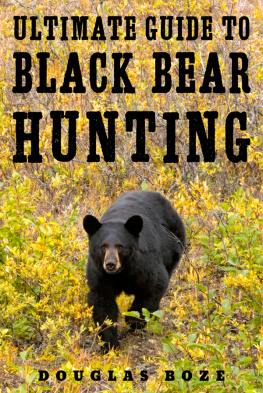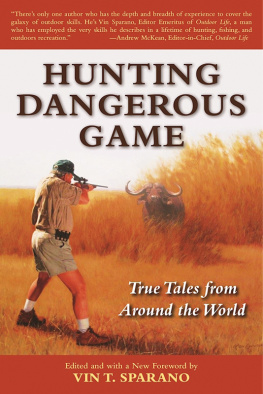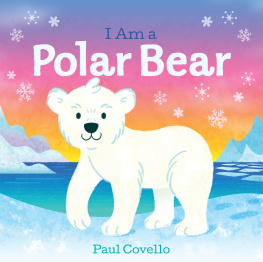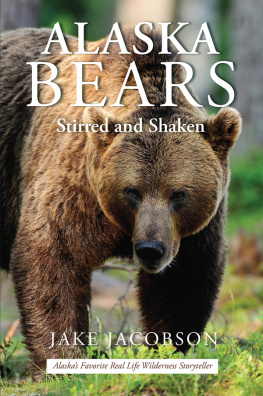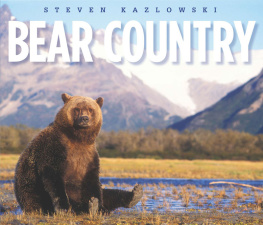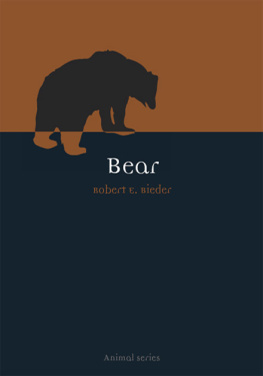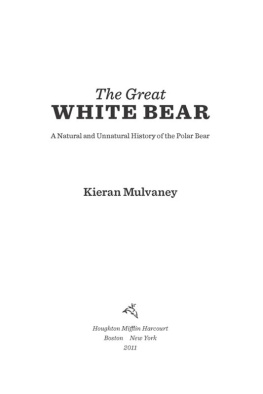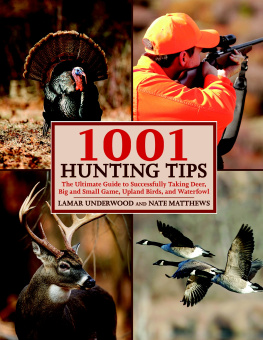H UNTING
B EARS

H UNTING
B EARS
T HE U LTIMATE G UIDE TO
H UNTING B LACK , B ROWN ,
G RIZZLY, AND P OLAR B EARS
Kathy Etling

Skyhorse Publishing
Copyright 2013 Skyhorse Publishing
All Rights Reserved. No part of this book may be reproduced in any manner without the express written consent of the publisher, except in the case of brief excerpts in critical reviews or articles. All inquiries should be addressed to Skyhorse Publishing, 307 West 36th Street, 11th Floor, New York, NY 10018.
Skyhorse Publishing books may be purchased in bulk at special discounts for sales promotion, corporate gifts, fund-raising, or educational purposes. Special editions can also be created to specifications. For details, contact the Special Sales Department, Skyhorse Publishing, 307 West 36th Street, 11th Floor, New York, NY 10018 or info@skyhorsepublishing.com.
Skyhorse and Skyhorse Publishing are registered trademarks of Skyhorse Publishing, Inc., a Delaware corporation.
Visit our website at www.skyhorsepublishing.com.
10 9 8 7 6 5 4 3 2 1
Library of Congress Cataloging-in-Publication Data is available on file.
ISBN: 978-1-62087-701-2
Printed in the United States of America
T ABLE OF C ONTENTS
P REFACE
T HE M OST D ANGEROUS G AME !
Many years ago a writer far more talented than I put pen to paper and composed an outstanding short story called The Most Dangerous Game. In this short story, a big game hunter has become bored with all of the worlds great wildlife species. We know this because the storys hero is taken inside the hunters lodge while the hunter explains the circumstances surrounding each of the animal trophies he has taken.
The twist in this story is that the hero himself has been brought to the hunters island haunt to become the hunters latest prey. The hero is the most dangerous game, according to the hunter, because he can think and plan and strike back and, perhaps, even gain the upper hand and win this most dangerous game.
I will not ruin the story for you, because it remains a notable piece of fine literature and one worth reading even if you read it many years ago and dont remember how it endednot that I can imagine anyone forgetting. I know I never will.
That is how good literature should affect you. While I do not pretend that this book is in any way, shape, or form, good literature, I do hope that it is both educational and thought-provoking for would-be and current bear hunters.
Bears, like humans, are considered highly intelligent, fierce when provoked, able to wreak revenge if the mood hits them, and dangerous. While humans have the upper hand in most cases, the bear can be quick to gain advantage. It is this element of risk and surprise that holds us in awe of them. It is the very notion of going up against an animal that is our equal in some ways and very much our superior in others that drives us as we save our money, sight in our guns, and test our bowsand then leave the warmth and safety of our homes to meet up with this grandestand most dangerousof creatures on its own turf.
Yes, bears are dangerous. We admire and respect them, as did our forefathers, for those very traits. And yet these huge animals, some with five-inch-long claws at the tips of roastingpan-size paws, more often than not choose to run from an encounter with us.
Through the ages, we as a species have whittled away at the bears supremacy until today perhaps even bears are no longer aware of how powerful and strong and magnificent they still are.
Today we hold the fate of all the worlds bear species in our hands. We can save these threatened and endangered animals or allow their numbers to dwindle and them to disappear from the earth.
For in our drive to populate every bit of wilderness, extract the last drop of oil from the earth, and constantly push bears into habitats that can no longer support them, all for the gratification of recently acquired habits, it is truly we humans who are now the most dangerous game. Not for our intellect and reason, so cherished by that long-ago writer of fiction, but for our tendency to focus only on ourselves and our desires, to the detriment of any other living species that get in the way.
Like the bears.
Kathy Etling
A CKNOWLEDGEMENTS
The writing of any book about the biology, behaviors, history, and hunting of bears is never a solo or totally independent project. I absolutely would have been unable to do this book on my own, that is the plain and simple truth.
Although I long have been fascinated by bears, cougars, and other large predators, I have never hunted them. I have hunted other creatures who share the woods with bears on numerous occasions, and I also have observed and interacted with bears during many of my trips to the West, while both hunting and hiking. Through many years of casual and serious study I have gained a tremendous respect for both these animals and for the people who hunt them, many of whom have been of inestimable help as I have pieced this book together.
First, I would like to thank my good friend and mentor, Jim Zumbo, hunting editor of Outdoor Life, for his advice, time, and anecdotes as well as the generous loan of his entire library of bear and bear hunting photos and slides. Jim has hunted bears for many years. His insights were truly of inestimable value.
I would also like to thank M. R. James, editor emeritus of Bowhunter Magazine, another dear friend who has also come to my aid on many previous occasions. M. R. is a guru of black bear hunting, as you will soon see for yourself while reading this book. M. R. has bowhunted black bears in many different states and provinces. He has taken ordinary black bears and huge, trophy bears, and he has done so while using a variety of different strategies and tactics. M. R. actually enjoys getting up close and personal with black bears, whether he chooses to harvest one or not. It shows in the wealth of anecdotes, hunting advice, and photos he has so graciously shared with us.
Although I have never met Jerome Knap, owner-outfitter of Canada North Outfitting, he too went above and beyond the call of duty. Jerome not only consented to an interview, he forwarded from his office many large, full-color photos of polar bears, polar bear hunters, and polar bear hunting incidents and situations that few other people have ever before been privileged to view. These photos, like the ones from Jim Zumbo and M. R. James, are all first-rate, and put the viewer in the thick of what it must feel like to be hunting Nanuq. I feel very fortunate to have been entrusted with their use, as well as to be able to pick a brain as full of bear lore as Jeromes.
Cody, Wyoming, elk outfitter Ron Dube also helped. Ron operates Ron Dubes Wilderness Adventures, an outfit that once guided many bear hunters both spring and fall. Although Ron no longer guides bear hunters, his store of bear hunting knowledge is vast, and his recall outstanding. He too provided me with many excellent photos, lots of anecdotes, and more time than he probably had to spare.
Larry Heathington, another old friend, has forgotten more about calling black bears than most other people have ever learned. Larrys knowledge of the topic is astounding, and he is also one of the finest teachers of wildlife lore Ive ever had the privilege of working with. Larry has always been generous to a fault with his time, knowledge, advice, and photos, and he came through for me once more as I worked on this project.

